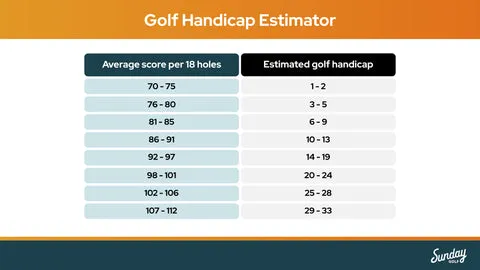If you are new to the world of betting, handicaps may seem like a daunting and confusing concept. However, understanding handicaps is essential if you want to have any chance of making profitable bets. In this article, we will break down the basics of reading handicaps and provide you with a comprehensive guide that will help you make informed decisions when placing your bets.
Introduction to Handicaps

Before we dive into the details of how to read handicaps, let’s first understand what they are. Handicaps are a type of bet where one team or player is given an advantage or disadvantage in order to even out the playing field. This is usually done to give underdogs a better chance of winning and to balance out the odds between two teams or players.
Handicaps are commonly used in sports betting, particularly in football, basketball, and tennis. They can also be found in horse racing and other forms of betting. Handicaps are indicated by a plus (+) or minus (-) sign followed by a number. The plus sign indicates a positive handicap, while the minus sign indicates a negative handicap.
Types of Handicaps
There are two main types of handicaps – positive and negative. Let’s take a closer look at each type and how they work.
Positive Handicaps
Positive handicaps are also known as “underdog” handicaps. This is because the team or player with the positive handicap is considered the weaker team or player, and is given an advantage to even out the odds. For example, in a football match between Team A and Team B, Team A may be given a positive handicap of +1.5, which means that they have a 1.5 goal advantage over Team B.
In order for a bet on Team A to be successful, they must either win the match or lose by less than 1.5 goals. On the other hand, a bet on Team B will only be successful if they win by more than 1.5 goals. Positive handicaps are usually used in matches where one team is heavily favored over the other.
Negative Handicaps
Negative handicaps are also known as “favorite” handicaps. This is because the team or player with the negative handicap is considered the stronger team or player, and is given a disadvantage to even out the odds. Using the same example as before, in a football match between Team A and Team B, Team A may be given a negative handicap of -1.5, which means that they have a 1.5 goal disadvantage against Team B.
For a bet on Team A to be successful, they must win by more than 1.5 goals. On the other hand, a bet on Team B will be successful if they either win the match or lose by less than 1.5 goals. Negative handicaps are commonly used in matches where one team is heavily favored over the other.
How to Read Positive Handicaps

Now that we have a basic understanding of handicaps and their types, let’s take a closer look at how to read positive handicaps.
When reading a positive handicap, you need to add the given number to the final score of the team or player. For example, if Team A has a handicap of +1.5 and the final score is 2-1, the adjusted score would be 3.5-1. In this case, Team A would be considered the winner, as their adjusted score is higher than Team B’s.
However, if the final score is 2-0, the adjusted score would be 2-1.5. In this case, Team A would still win, as their adjusted score is higher than Team B’s. It is important to note that in handicap betting, the adjusted score is what matters, not the actual score of the match.
How to Read Negative Handicaps
Reading negative handicaps is essentially the opposite of reading positive handicaps. When reading a negative handicap, you need to subtract the given number from the final score of the team or player. For example, if Team A has a handicap of -1.5 and the final score is 2-1, the adjusted score would be 0.5-1. In this case, Team B would be considered the winner, as their adjusted score is higher than Team A’s.
On the other hand, if the final score is 2-0, the adjusted score would be 2-1.5. In this case, Team A would still win, as their adjusted score is higher than Team B’s. As mentioned before, the adjusted score is what matters in handicap betting.
Tips for Making Handicap Bets

Now that you know how to read handicaps, here are some tips to keep in mind when making handicap bets:
- Do your research: Handicap betting requires a good understanding of the teams or players involved. Make sure to do your research on their recent performance, strategies, and any other factors that may affect the outcome of the match.
- Consider the margin: The margin of the handicap can have a significant impact on the outcome of the bet. A smaller margin means that the underdog has a higher chance of winning, while a larger margin means that the favorite has a higher chance of winning.
- Keep track of home and away performances: Some teams or players may perform better at home while others may perform better away. This can have an impact on the outcome of the match and should be taken into consideration when making handicap bets.
- Look for value: Handicap betting offers more attractive odds compared to traditional 1X2 betting. Look for opportunities where you can get good value for your bets.
- Start small: If you are new to handicap betting, it is best to start with small bets until you become more familiar with how it works. This will help you minimize your losses and gain experience before moving on to bigger bets.
Conclusion
Handicaps may seem complicated at first, but once you understand how they work, they can be a valuable tool in your betting arsenal. Remember to always do your research, consider the margin, and look for value when making handicap bets. With this comprehensive guide, you are now equipped with the knowledge to read handicaps and make informed decisions when placing your bets. Good luck!



